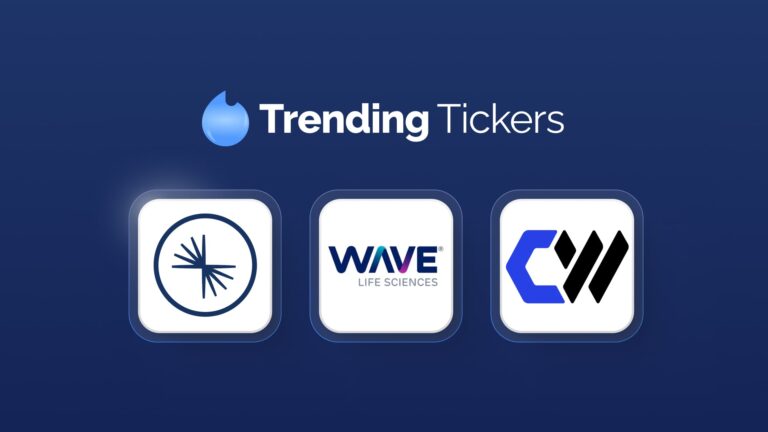Firefly Aerospace ($FLY) IPO: Everything You Need to Know
This year has been active for IPOs capturing retail investors’ attention, with FinTech, AI, and Aerospace & Defense leading the trend. Several aerospace companies have already gone public, including $AIRO and $VOYG, and now another space technology player is preparing to join the market. Firefly Aerospace has filed its S-1 with the SEC, and in this article, we break down the filing to highlight the company’s business model, revenue streams, financial metrics, and other key details investors should know.
Company Overview and Business Model
Firefly Aerospace Inc. is a Texas-based space and defense technology company offering end-to-end mission solutions for government and commercial clients. Founded in 2017, Firefly designs, builds, and operates launch vehicles and spacecraft, with vertically integrated facilities enabling rapid development and production.
Its business is split into two main segments: Launch Services (delivering satellites and payloads to orbit) and Spacecraft Solutions (building and operating vehicles such as lunar landers and orbital transfer tugs). The Alpha rocket, a 1,000 kg-class launcher, has completed four successful orbital missions, including a record-setting “responsive launch” for the U.S. Space Force in 2023.
On the spacecraft side, Blue Ghost achieved the first fully successful commercial Moon landing in March 2025, delivering ten NASA payloads under a $102 million contract. Firefly also develops Elytra orbital vehicles for satellite deployment, orbital maneuvers, and lunar data relay.
Overall, Firefly positions itself as a one-stop shop for space missions, combining rockets and spacecraft to meet the needs of national security and commercial customers seeking flexible, rapid access to space.


Financial Highlights
Firefly is still in its early growth phase and remains unprofitable as it invests heavily in R&D and manufacturing capacity. According to its S-1 filing, the company generated $60.8 million in revenue in 2024, up 10% from $55.2 million in 2023. Most of this growth came from the Spacecraft Solutions segment, which nearly doubled to $38.2 million on the back of Blue Ghost mission milestones. Launch services, however, slowed to $22.6 million (down from $33.0 million in 2023) due to only one Alpha rocket launch last year versus two in 2023.
Despite rising sales, Firefly posted a net loss of $231.1 million in 2024, compared to $135.5 million in 2023, as R&D expenses rose to $149.5 million. In the first quarter of 2025, revenue spiked to $55.9 million (up from $8.3 million in Q1 2024), largely from the successful Blue Ghost lunar landing, yet losses remained high at $60.1 million.
The company acknowledges it has a history of net losses and expects to remain unprofitable for several more years while scaling production, developing new vehicles, and expanding its infrastructure. Firefly has accumulated a significant deficit to date, relying on investor funding to fuel its rapid growth strategy.
Growth Trends and Expansion Plans
Firefly Aerospace is expanding rapidly, driven by strong demand and a growing backlog of contracts. As of March 31, 2025, the company reported a $1.1 billion backlog, nearly double the $560 million recorded at the end of 2023. This includes over 30 planned launches under contract for Alpha and future vehicles, reflecting confidence from U.S. government agencies, commercial satellite operators, and international partners.
A major part of Firefly’s growth strategy is Eclipse, a new medium-lift, reusable rocket co-developed with Northrop Grumman. Designed to deliver ~16,000 kg to low Earth orbit (16× Alpha’s capacity), Eclipse will target missions such as national security payloads, commercial satellite launches, and space station resupply. First launch is expected in 2026 from Wallops Island, VA, with Northrop’s investment helping accelerate development and engine testing.
Beyond rockets, Firefly is scaling its spacecraft business. Following the success of Blue Ghost Mission 1, which landed on the Moon in 2025, the company plans annual lunar lander missions under NASA’s Commercial Lunar Payload Services program, including a $177 million contract for a South Pole mission. Firefly is also expanding its Elytra orbital vehicle portfolio, with upcoming missions for the U.S. Space Force and National Reconnaissance Office, and plans to offer lunar imaging and communications services (“Ocula”) by 2026.
This article is for informational purposes only and is neither investment advice nor a solicitation to buy or sell securities. All investments involve inherent risks, including the total loss of principal, and past performance is not a guarantee of future results. Investing in initial public offerings (IPOs) carries additional risks, such as volatility, limited operating history, lack of liquidity, and potential overvaluation. IPO stocks may experience significant price fluctuations and may not perform as expected. Always conduct thorough research or consult with a financial expert before making any investment decisions. BBAE has no position in any investment mentioned.














